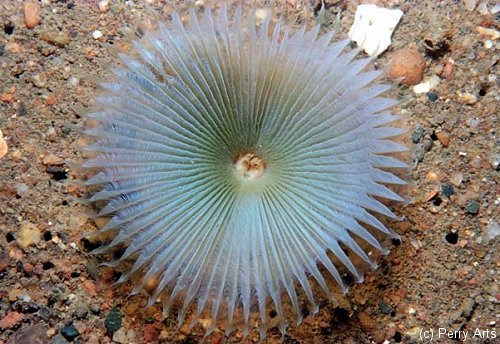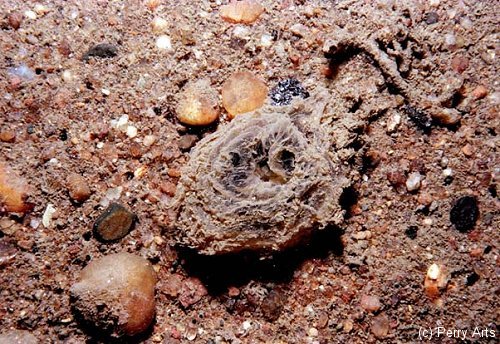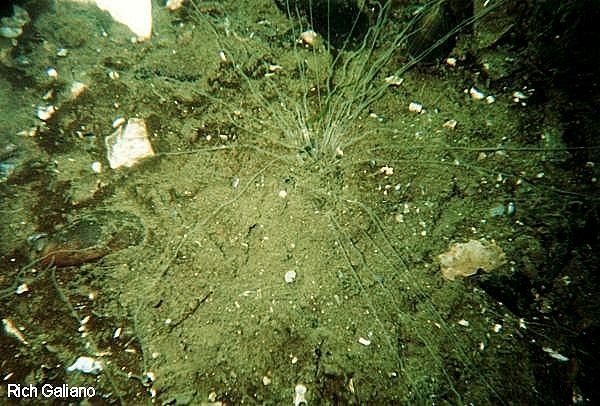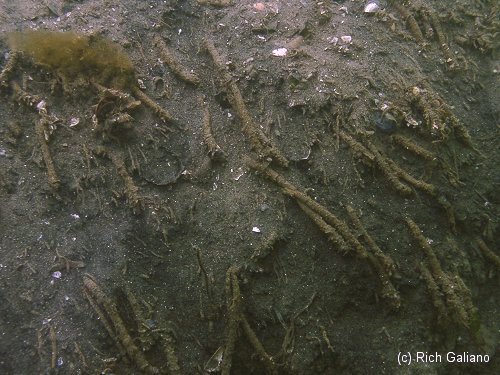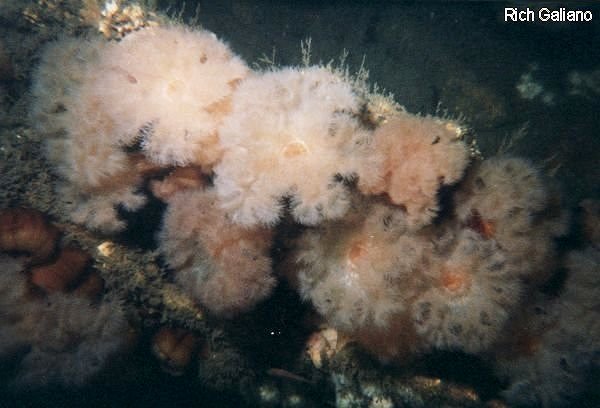Tube Worms
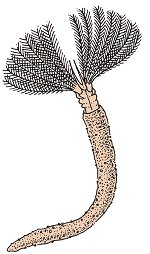
Tube worms live with their bodies buried in tubes that they construct in the soft bottom substrate. Fan Worms ( Sabella spp. and others, 1/8" to 8", right ) are among the most popular sights on tropical coral reefs. Few people realize that they are present in temperate waters as well.
Fan Worms, or "Featherdusters", have a frill of tentacles on the head with which they feed on plankton, and occasionally larger items. Food particles are trapped in sticky mucous and carried down into the mouth. Some Fan Worms have eyespots along the tentacles.
Despite appearances, Fan Worms are not related to any of the other tentacled creatures on this page but are actually polychaetes, related to clam worms.
